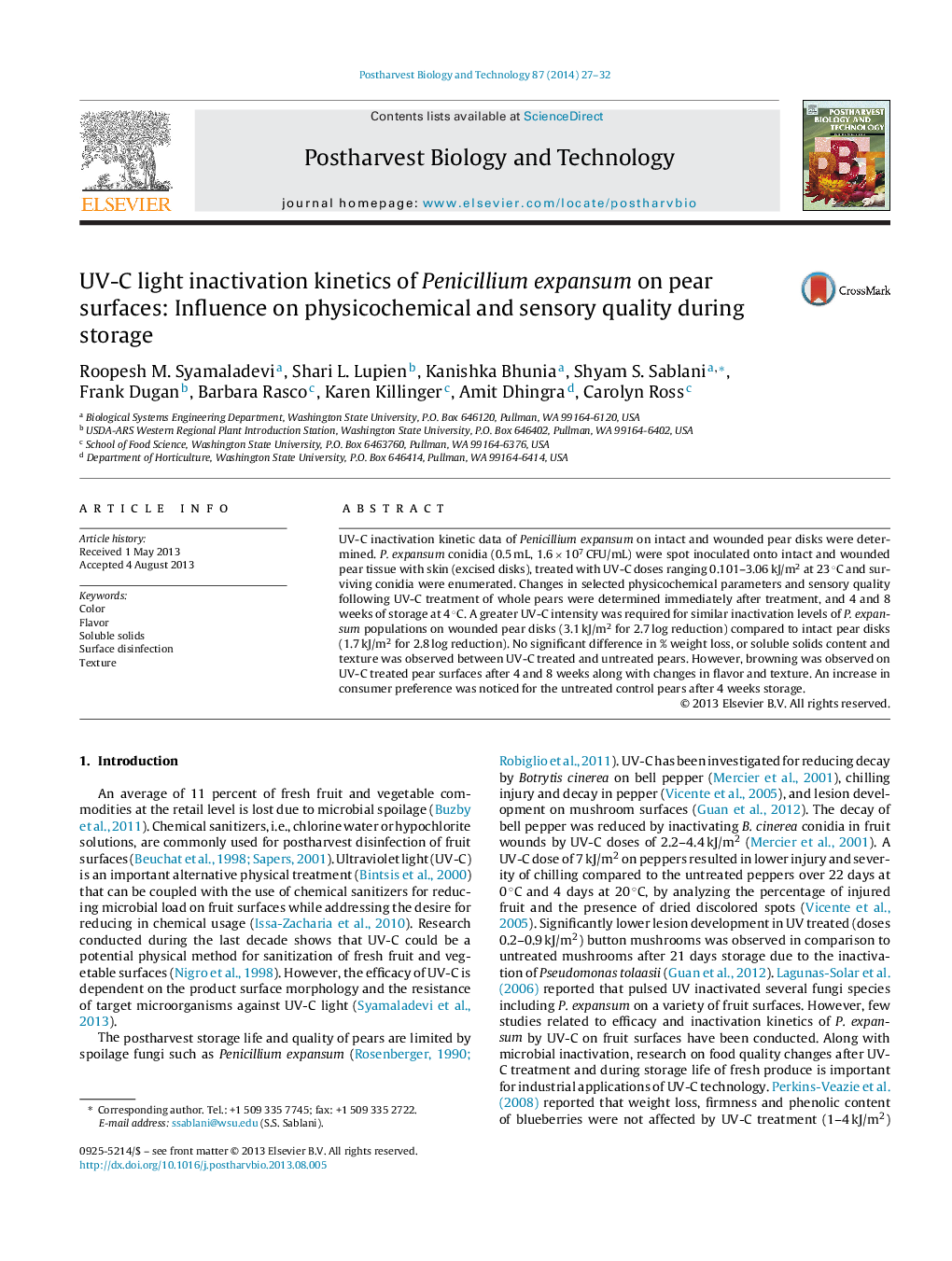| Article ID | Journal | Published Year | Pages | File Type |
|---|---|---|---|---|
| 4518326 | Postharvest Biology and Technology | 2014 | 6 Pages |
•UV-C radiation effectively reduced the Penicillium expansum population on intact, and to a lesser extent on wounded, pear surfaces.•UV-C at the levels tested did not negatively impact on quality factors such as weight loss, soluble solids and texture.•Surface browning was observed on UV-C treated pears after 4 weeks of storage and this can result in changes in the sensory qualities.
UV-C inactivation kinetic data of Penicillium expansum on intact and wounded pear disks were determined. P. expansum conidia (0.5 mL, 1.6 × 107 CFU/mL) were spot inoculated onto intact and wounded pear tissue with skin (excised disks), treated with UV-C doses ranging 0.101–3.06 kJ/m2 at 23 °C and surviving conidia were enumerated. Changes in selected physicochemical parameters and sensory quality following UV-C treatment of whole pears were determined immediately after treatment, and 4 and 8 weeks of storage at 4 °C. A greater UV-C intensity was required for similar inactivation levels of P. expansum populations on wounded pear disks (3.1 kJ/m2 for 2.7 log reduction) compared to intact pear disks (1.7 kJ/m2 for 2.8 log reduction). No significant difference in % weight loss, or soluble solids content and texture was observed between UV-C treated and untreated pears. However, browning was observed on UV-C treated pear surfaces after 4 and 8 weeks along with changes in flavor and texture. An increase in consumer preference was noticed for the untreated control pears after 4 weeks storage.
